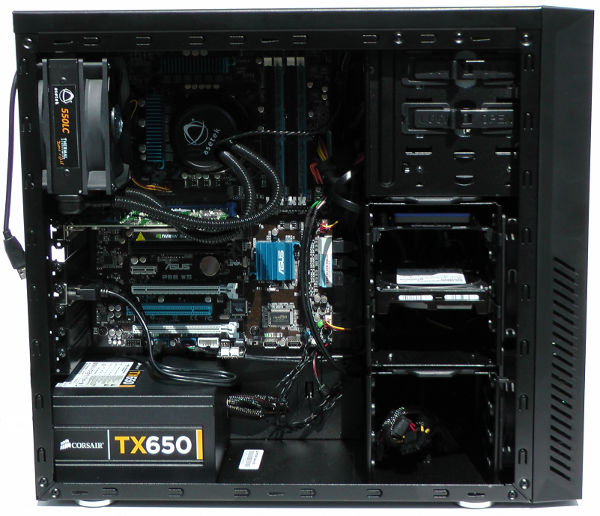iBuyPower P500X And P900DX Workstations, Reviewed
Armed with updated workstation benchmarks, we have two systems from iBuyPower in the lab today: a $2,000 quad-core entry-level rig, and an $8,000 sixteen-core behemoth. With $6,000 separating the two, is the performance spread really what you'd expect?
The iBuyPower P500X
P500X
The iBuyPower P500X starts at $1,259, but our test unit, as it was configured, sells for $1,999.
The iBuyPower P500X that we tested features the discontinued Cooler Master Silencio 550 case. The base P500X is now wrapped in an Antec Nine Hundred Two V3, with Antec's P280 and Corsair's Obsidian Series 550D as alternative options.



The Silencio comes stock with sound insulation inside the front door and side panels, but you'll need to choose the Corsair case to get those same features from iBuyPower's configurator today. Combined with the optional Asetek 550LC closed-loop liquid cooler, the insulation goes a long way in reducing total system noise.
The power button, reset switch, headphone/mic jacks, one USB 3.0, and one USB 2.0 port reside along the top front edge of the system. That's a plus for anyone with their PC hidden under a desk, but still within arm's length.
The rear of our P500X is pretty plain, save for an odd USB 3.0 lead running out through one of the grommets meant to accommodate a water cooling hose. This is probably because the front panel only has one USB 3.0 port. At least, that’s our theory. The additional on-board USB headers are routed to an add-in rear I/O slot bracket.
The inside of the P500X is tidy, with cables running behind the motherboard whenever possible. But although iBuyPower does a fairly respectable job with cable management, you'll find that the sound insulation behind the motherboard makes working back there a little tight. Also, that USB-laden I/O bracket would need to be moved if you were ever planning to install a second graphics card in SLI, or if you wanted to add an Nvidia Tesla board.
Get Tom's Hardware's best news and in-depth reviews, straight to your inbox.
Current page: The iBuyPower P500X
Prev Page When System Builders Go Pro Next Page The iBuyPower P900DX
